Tiger-Sul Newsletters are regular updates pertaining to sulphur and micronutrient issues. These newsletters will include information on formulation developments, new products, current product performance and Tiger-Sul research and development initiatives.
Read on for the latest in sulphur and micronutrient news.
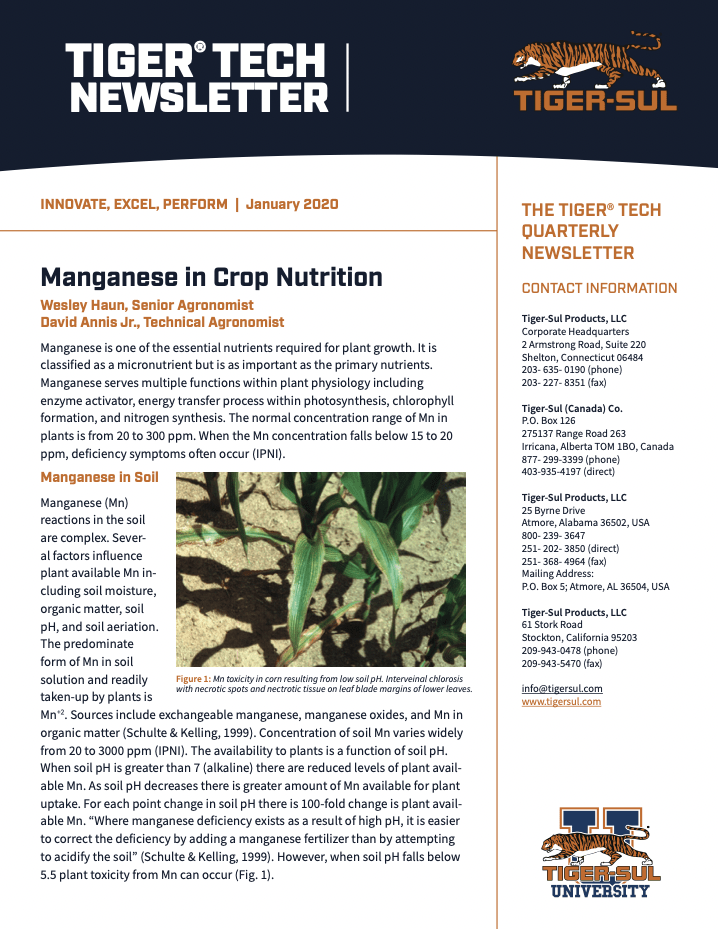
Manganese is one of the essential nutrients required for plant growth. It is classified as a micronutrient but is as important as the primary nutrients. Manganese serves multiple functions within plant physiology including enzyme activator, energy transfer process within photosynthesis, chlorophyll formation, and nitrogen synthesis.

There are several sources of sulphur (S) products available for use as a plant nutrient. Each product has a place in the market and functions as designed when managed appropriately. Some products are water soluble; others are not water soluble. Whereas, some products contain water soluble and non-water soluble sulphur ingredients. Product characteristics influence management methods to optimize crop benefits.

Quarterly Tech Update: Plant Tissue Analyses Improve Knowledge Base of Plant Nutrient Status and the Difference between Tiger 90CR® Sulphur and Ammonium Sulphate.
Tiger-Sul’s internal team of experts and specialists in the fields of chemistry, agronomy and biology continually focus on developing and producing outstanding, cost effective new and improved fertilizers using the latest technological advances available to them.
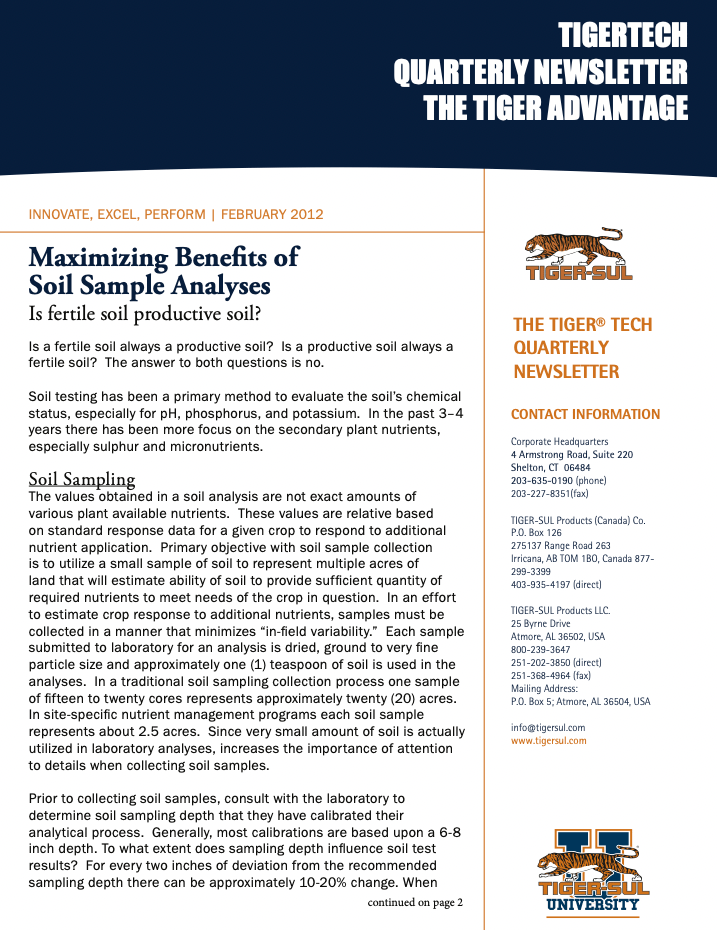
Is fertile soil productive soil?
Is a fertile soil always a productive soil? Is a productive soil always a fertile soil? The answer to both questions is no. Soil testing has been a primary method to evaluate the soil’s chemical status, especially for pH, phosphorus, and potassium. In the past 3–4 years there has been more focus on the
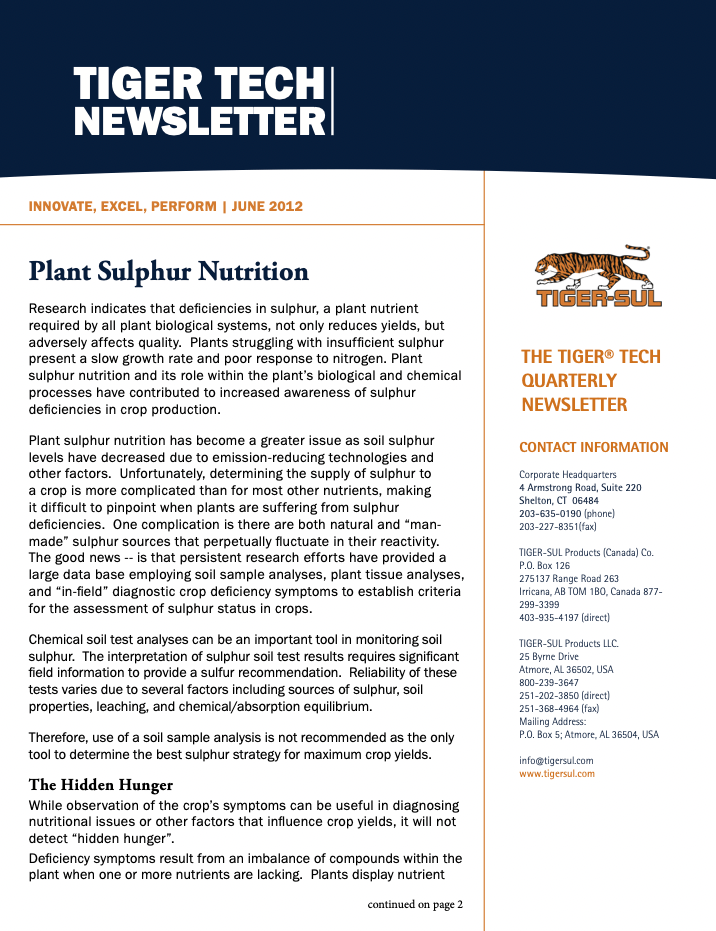
Research indicates that deficiencies in sulphur, a plant nutrient required by all plant biological systems, not only reduces yields, but adversely affects quality. Plants struggling with insufficient sulphur present a slow growth rate and poor response to nitrogen. Plant sulphur nutrition and its role within the plant’s biological and chemical processes have contributed to increased awareness of sulphur deficiencies in crop production.
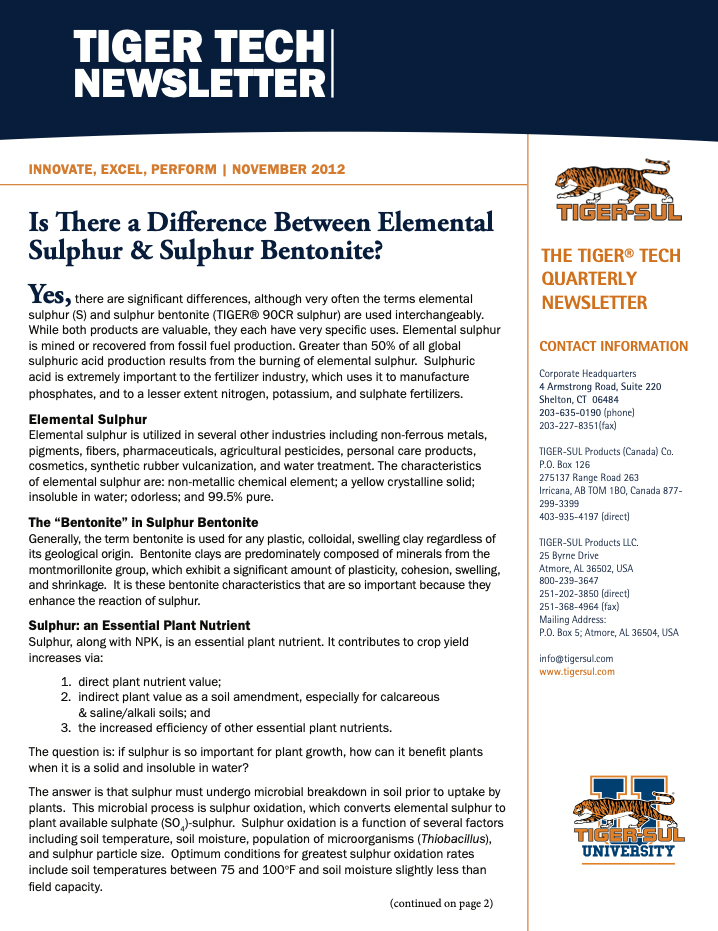
Yes, there are significant differences, although very often the terms elemental sulphur (S) and sulphur bentonite (TIGER® 90CR sulphur) are used interchangeably. While both products are valuable, they each have very specific uses. Elemental sulphur is mined or recovered from fossil fuel production. Greater than 50% of all global sulphuric acid production results from the burning of elemental sulphur. Sulphuric acid is extremely important to the fertilizer industry, which uses it to manufacture phosphates, and to a lesser extent nitrogen, potassium, and sulphate fertilizers.
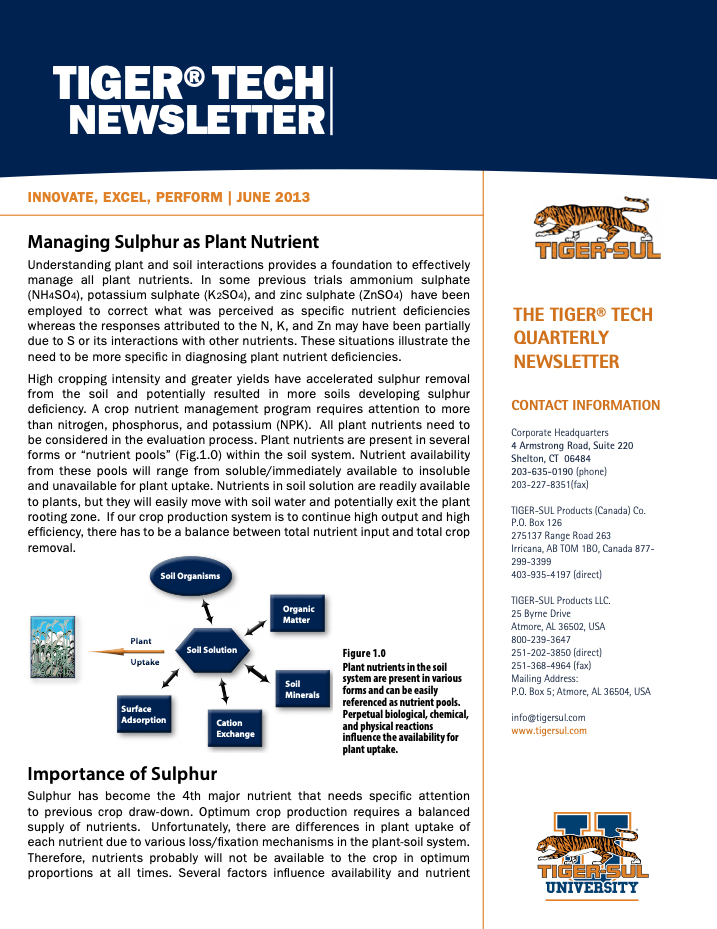
Understanding plant and soil interactions provides a foundation to effectively manage all plant nutrients. In some previous trials ammonium sulphate (NH4SO4), potassium sulphate (K2SO4), and zinc sulphate (ZnSO4) have been employed to correct what was perceived as specific nutrient deficiencies whereas the responses attributed to the N, K, and Zn may have been partially due to S or its interactions with other nutrients. These situations illustrate the need to be more specific in diagnosing plant nutrient deficiencies.
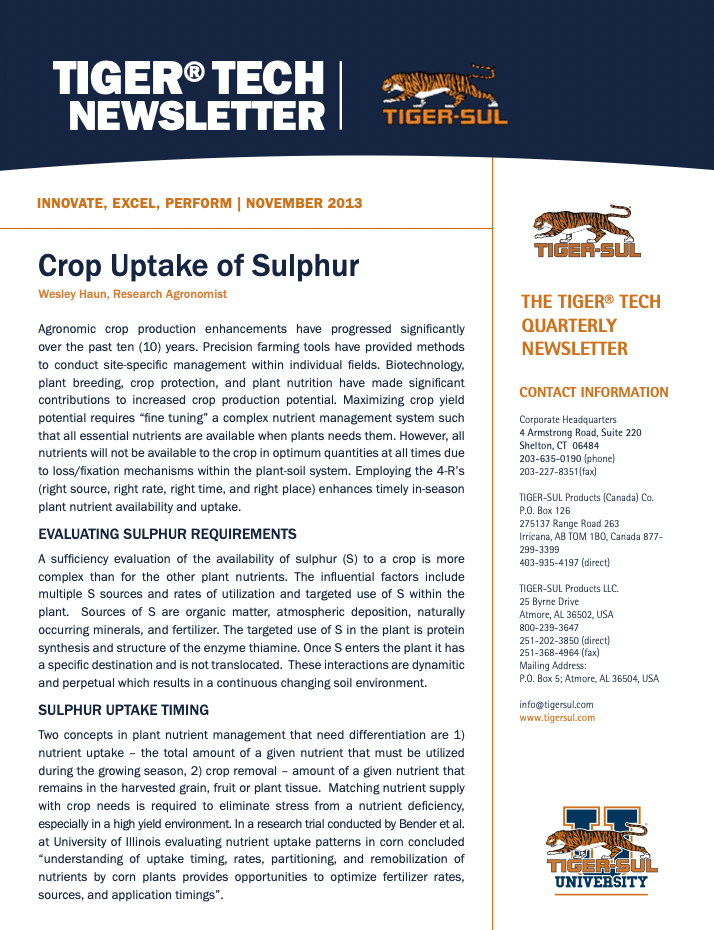
Agronomic crop production enhancements have progressed significantly over the past ten (10) years. Precision farming tools have provided methods to conduct site-specific management within individual fields. Biotechnology, plant breeding, crop protection, and plant nutrition have made significant contributions to increased crop production potential. Maximizing crop yield potential requires “fine tuning” a complex nutrient management system such that all essential nutrients are available when plants needs them.
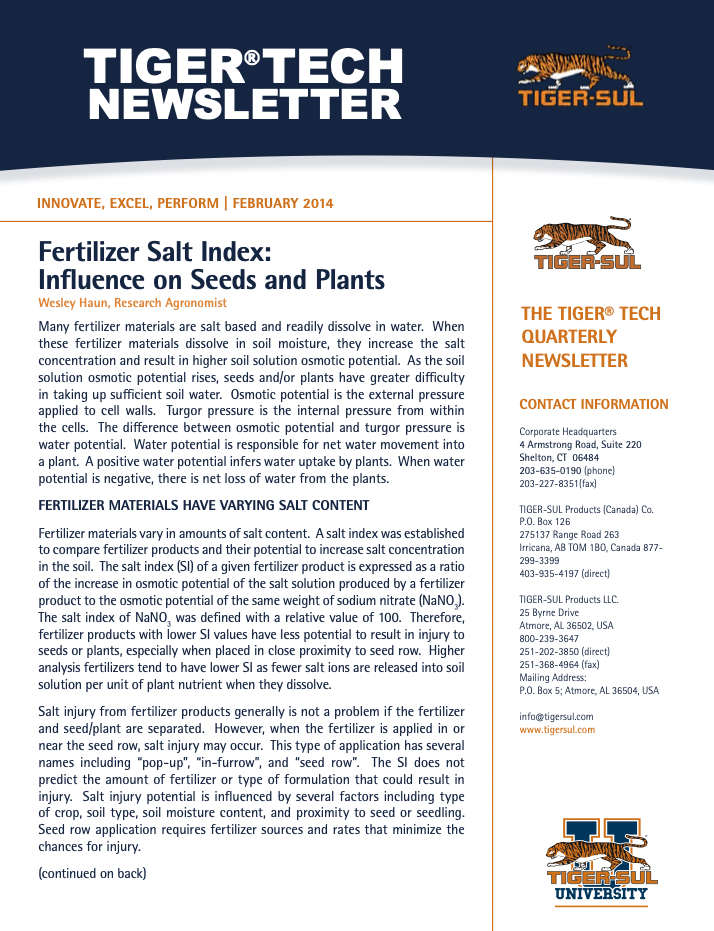
Many fertilizer materials are salt based and readily dissolve in water. When these fertilizer materials dissolve in soil moisture, they increase the salt concentration and result in higher soil solution osmotic potential. As the soil solution osmotic potential rises, seeds and/or plants have greater difficulty in taking up sufficient soil water.
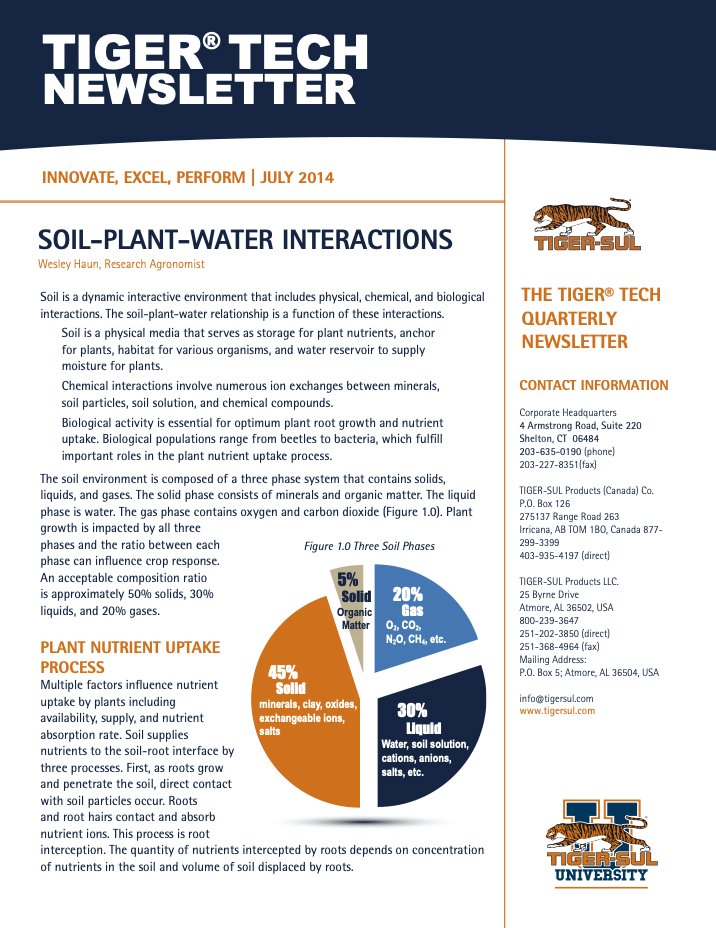
Soil is a dynamic interactive environment that includes physical, chemical, and biological interactions. The soil-plant-water relationship is a function of these interactions.
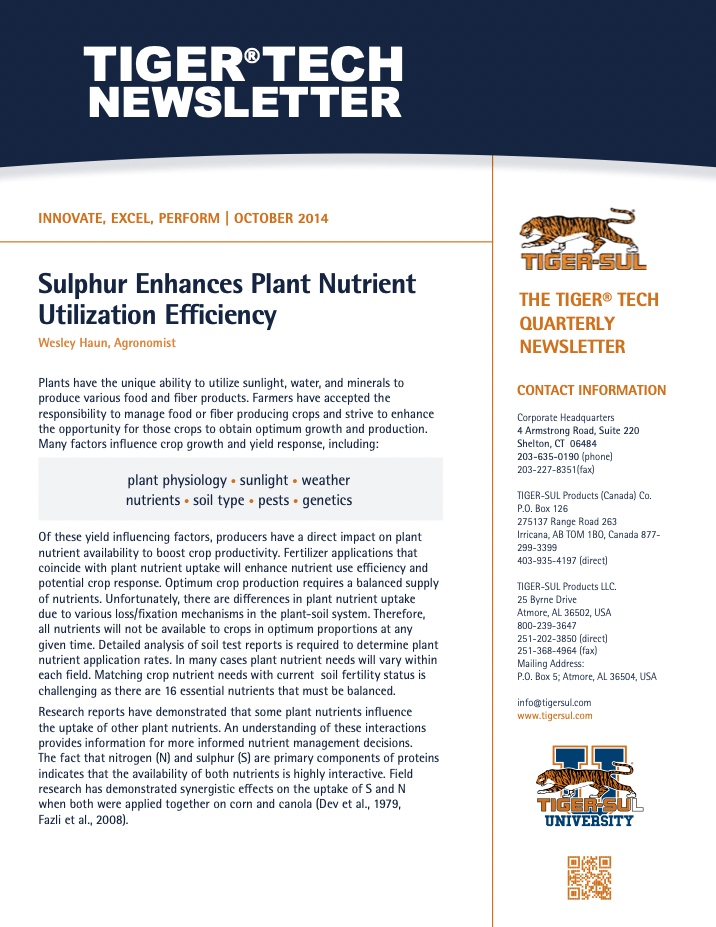
Plants have the unique ability to utilize sunlight, water, and minerals to produce various food and fiber products. Farmers have accepted the responsibility to manage food or fiber producing crops and strive to enhance the opportunity for those crops to obtain optimum growth and production. Many factors influence crop growth and yield response, including: plant physiology, sunlight, weather, nutrients, soil type, pests, and genetics.
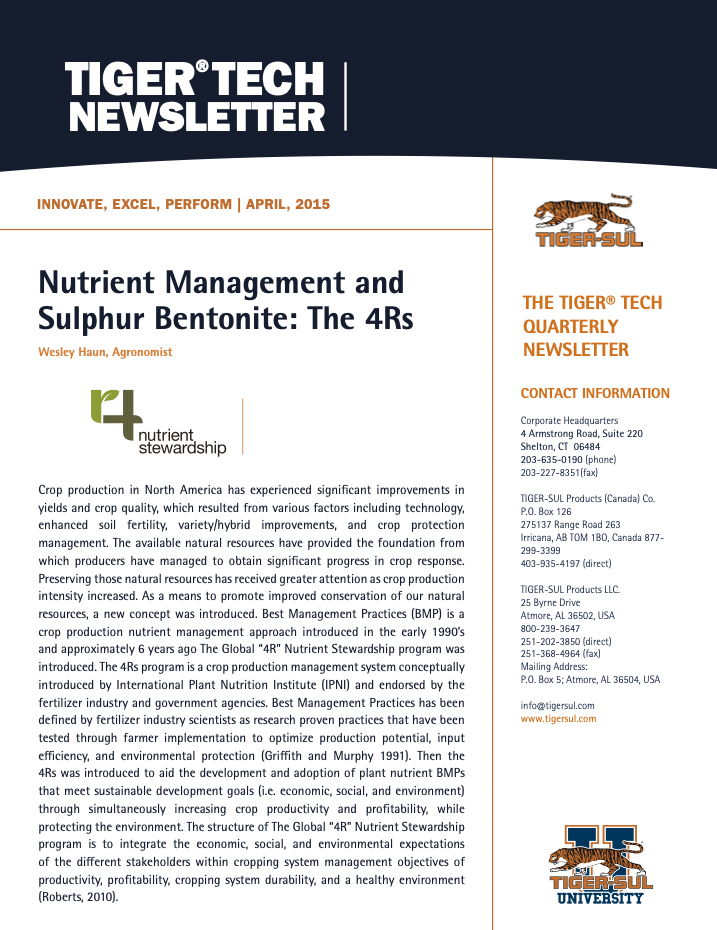
Crop production in North America has experienced significant improvements in yields and crop quality, which resulted from various factors including technology, enhanced soil fertility, variety/hybrid improvements, and crop protection management. The available natural resources have provided the foundation from which producers have managed to obtain significant progress in crop response.
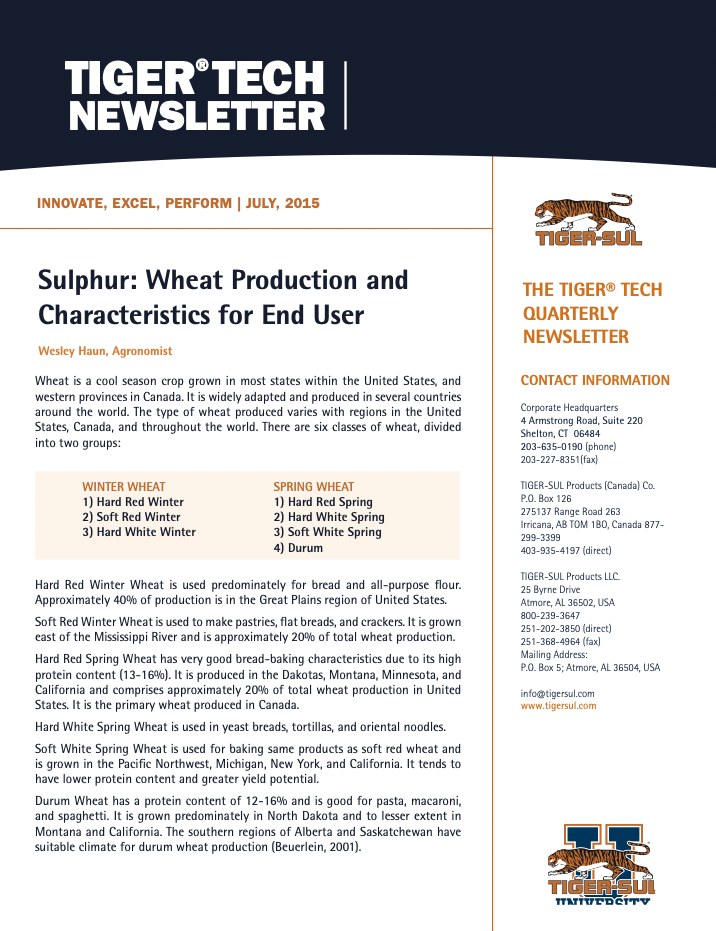
Wheat is a cool season crop grown in most states within the United States, and western provinces in Canada. It is widely adapted and produced in several countries around the world. The type of wheat produced varies with regions in the United States, Canada, and throughout the world. There are six classes of wheat, divided into two groups: winter wheat and spring wheat.
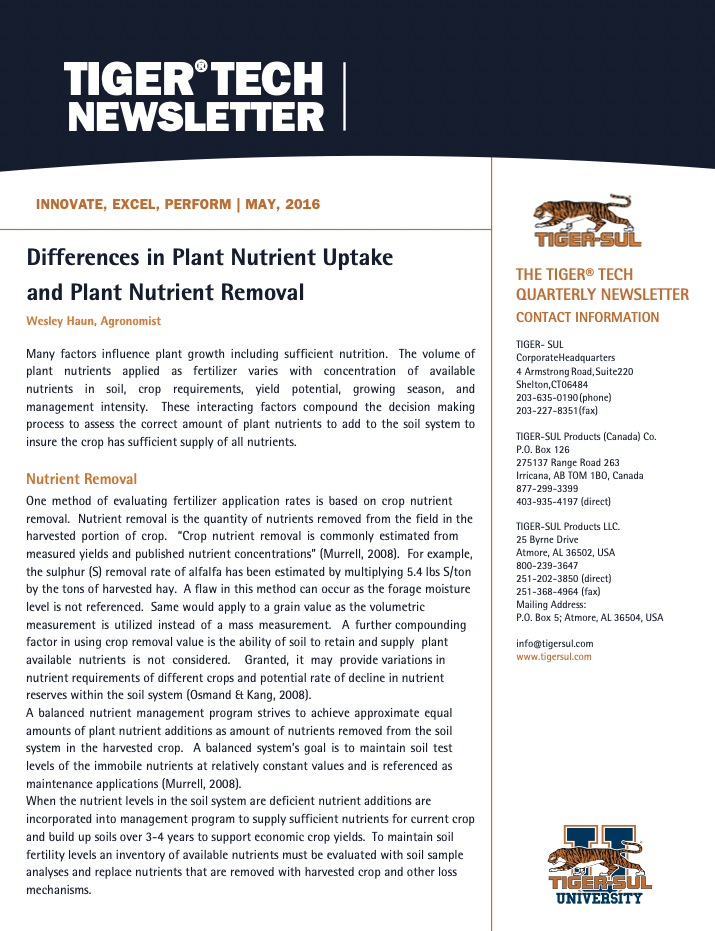
Many factors influence plant growth including sufficient nutrition. The volume of plant nutrients applied as fertilizer varies with concentration of available nutrients in soil, crop requirements, yield potential, growing season, and management intensity. These interacting factors compound the decision making process to assess the correct amount of plant nutrients to add to the soil system to insure the crop has sufficient supply of all nutrients.
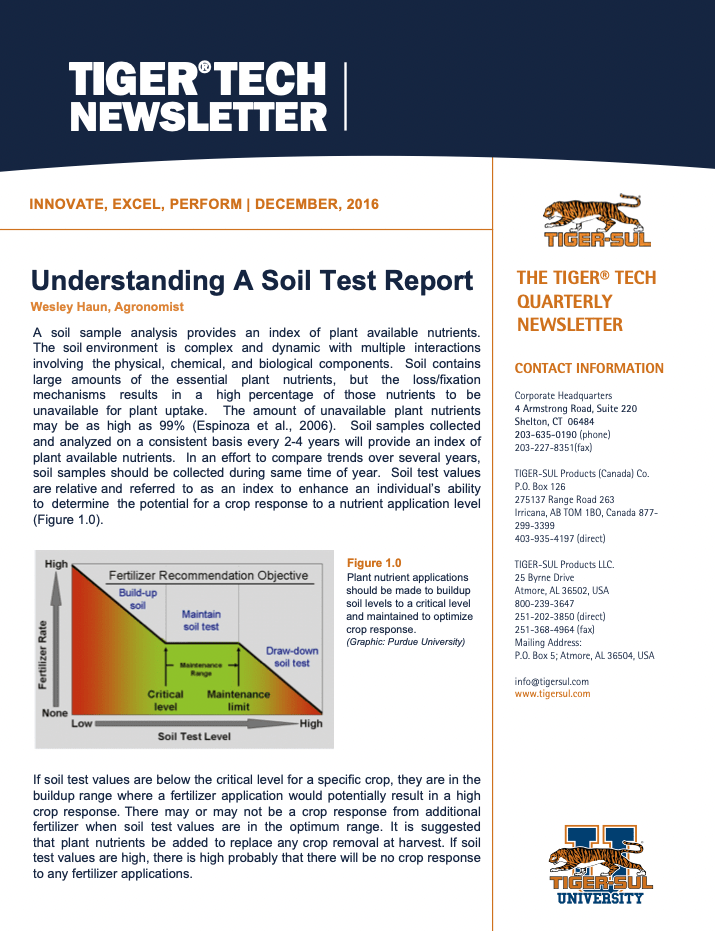
A soil sample analysis provides an index of plant available nutrients. The soil environment is complex and dynamic with multiple interactions involving the physical, chemical, and biological components.
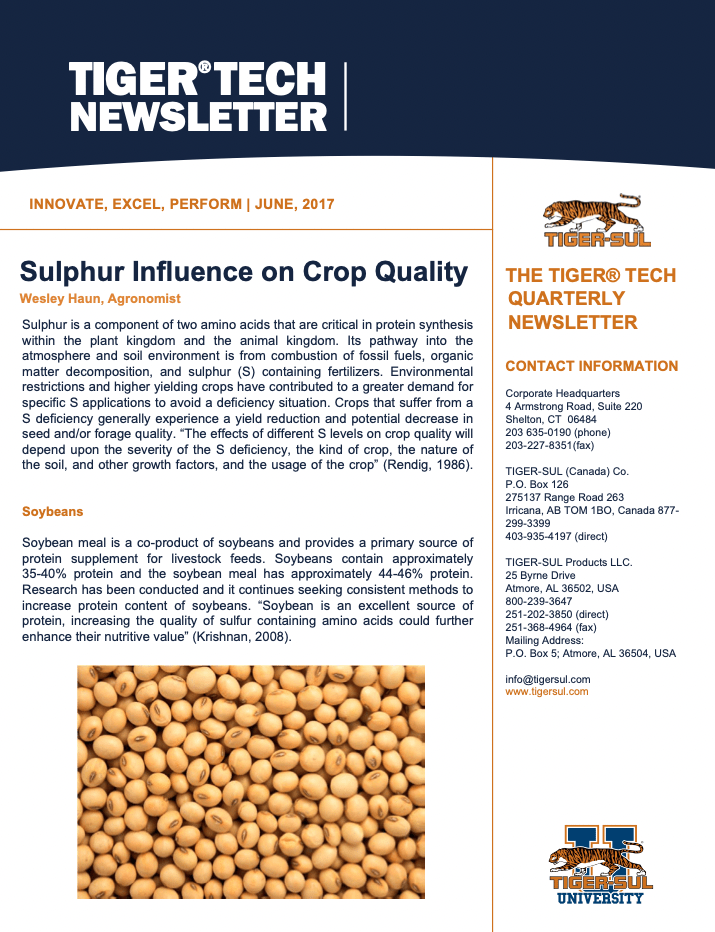
Sulphur is a component of two amino acids that are critical in protein synthesis within the plant kingdom and the animal kingdom. Its pathway into the atmosphere and soil environment is from combustion of fossil fuels, organic matter decomposition, and sulphur (S) containing fertilizers.
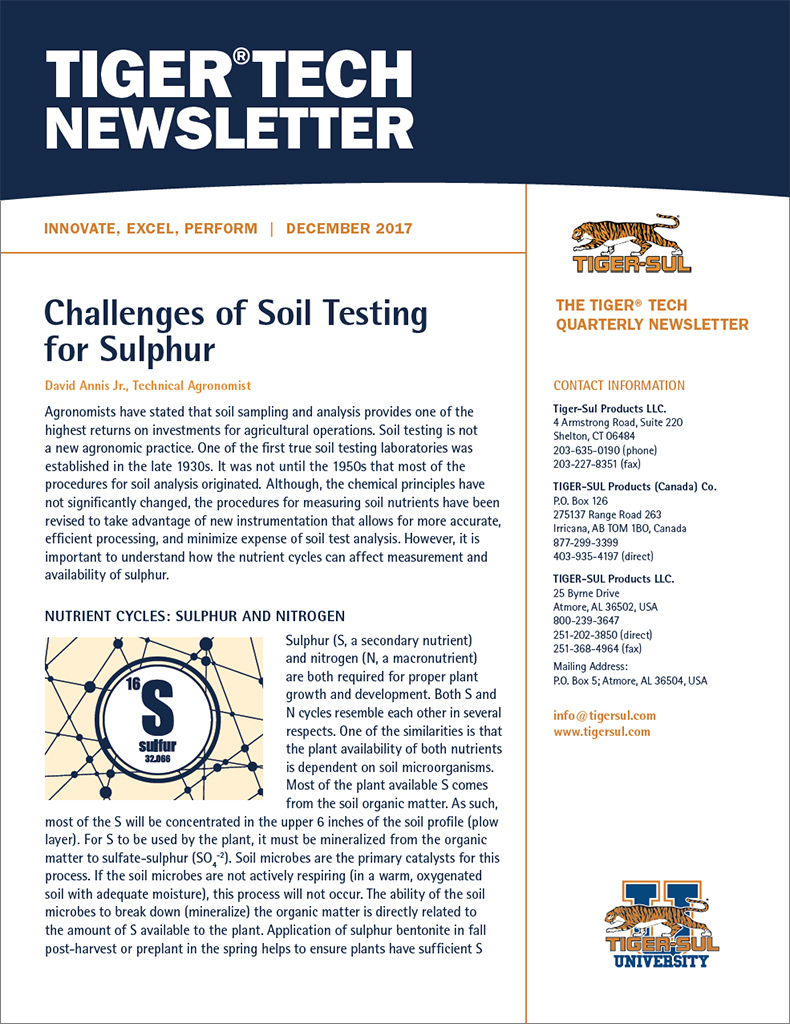
Agronomists have stated that soil sampling and analysis provides one of the highest returns on investments for agricultural operations. Soil testing is not a new agronomic practice. One of the first true soil testing laboratories was established in the late 1930s. It was not until the 1950s that most of the procedures for soil analysis originated.
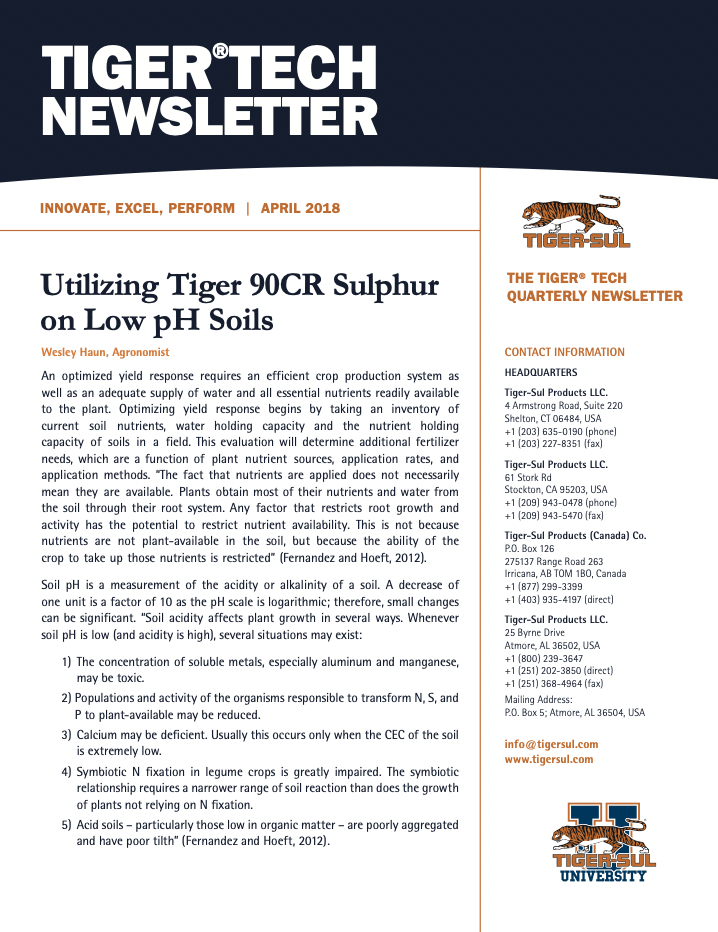
An optimized yield response requires an efficient crop production system as well as an adequate supply of water and all essential nutrients readily available to the plant. Optimizing yield response begins by taking an inventory of current soil nutrients, water holding capacity and the nutrient holding capacity of soils in a field.
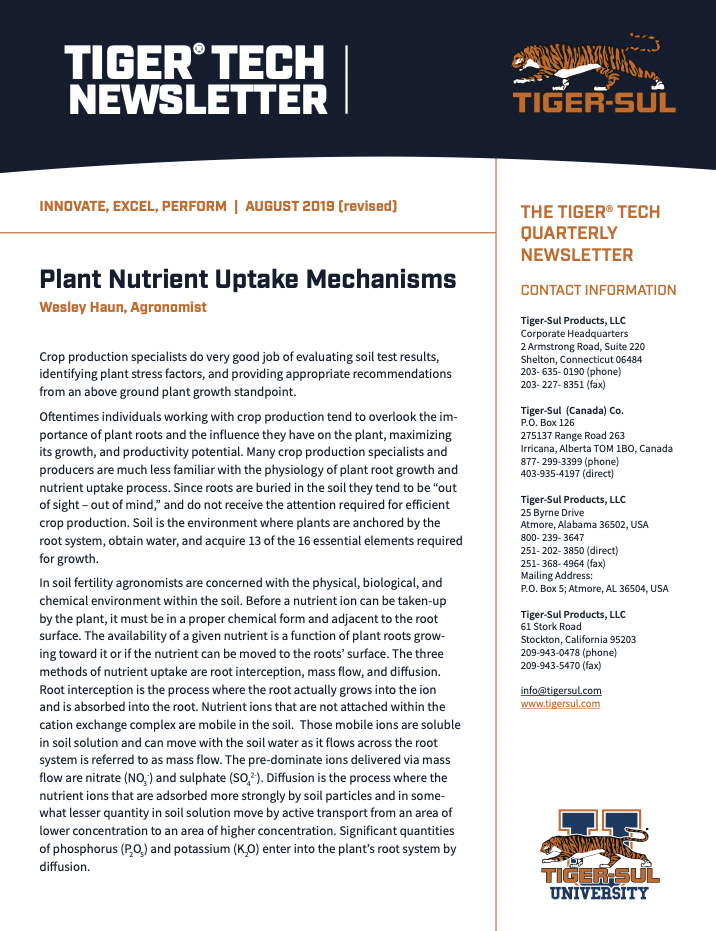
Crop production specialists do very good job of evaluating soil test results, identifying plant stress factors, and providing appropriate recommendations from an above ground plant growth standpoint.
Oftentimes individuals working with crop production tend to overlook the importance of plant roots and the influence they have on the plant, maximizing its growth, and productivity potential.
